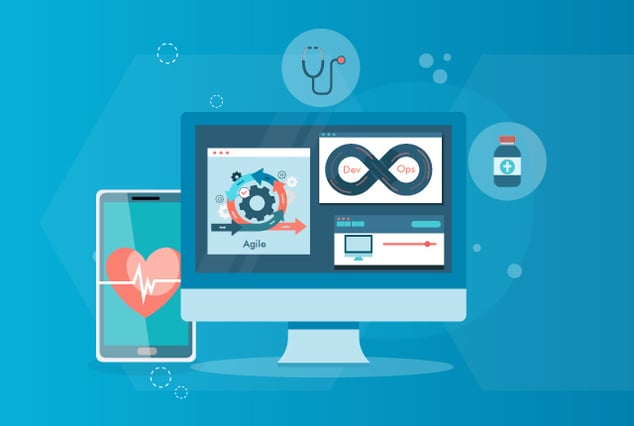
We hope you enjoyed our first installation of this blog post, where we dive into some of the pain points unique to healthcare domain testing and explore their solutions. Whether you have access to a QA partner, or you’re taking on the challenge of healthcare software testing in-house, this article should help you navigate the road ahead!
Let’s get started!
Integration issues
The healthcare domain is vast. Within the products released in this space are modules, submodules, and very complex architecture. There’s a lot of communication occurring between the subsystems, and thorough integration testing is required to ensure that the transfer of data happens as it should.
Pain points
-
The most pertinent pain point is data transmission. Inappropriate data transmission can lead to many problems down the line.
-
If testers aren’t aware of all the data workflows, issues that hinder the progress of the application and compromise data security may arise.
Solutions
-
Your QA engineers should be technically proficient, continually trained, and maintain a “go-getter” attitude to troubleshoot and find the root cause of issues.
-
Engineers should possess inside-and-out knowledge of the application and business workflows so that they can strategize the testing activities effectively.
-
Thorough integration testing between third-party applications should be a primary focus for successful patient report generation and revenue generation.
Cyber risk and data security
The healthcare industry is one of the most targeted sectors by malicious hackers—and that’s probably not going to change any time soon. Securely handling the tremendous amount of patient data and protecting it from threats is crucial, which means that security testing is a must. Here are some of the top challenges faced by security testers in this area.
Pain points
-
Audits of updated clinical workflows and data encryption verification are required to ensure the application’s security.
-
Inappropriate security testing strategies may lead to attacks. Loopholes become vulnerable access points for attackers, and these can be tough to keep secure.
-
Data hacking tools get better and better, so your QA engineers need to keep upgrading their skill sets to match this pace.
-
Patients want increased access to their medical records via mobile and smart devices, which creates additional vulnerability. This can make it tough to plan testing activities in a way that supports all OS and browser configurations.
Solutions
-
Teams should ensure that there is no data leakage during the transmission of patient data between the various modules and submodules of the application. Tools like Drozer, White Hat, and others are recommended, as well as validating data storage using appropriate techniques.
-
Engineers should always verify that the application meets HIPAA compliance—a must in the healthcare space!
-
As many healthcare applications support data exchange across email, the cloud, and mobile devices, these integrations must be focused on to ensure that there is no unauthorized access to data at any stage of the exchange.
-
Security testing should be planned during the initial stage of testing so that the team has plenty of time to find, diagnose, and fix all related threats and vulnerabilities within the software.
Performance testing
Nowadays, most healthcare products are used on web browsers and mobile apps. These products can deliver vital information to patients, help doctors work more intelligently with partner providers, simplify coordination with insurance companies, and streamline access to patient support services.
These products can directly impact the life and well-being of patients, so smooth performance is required for an optimal customer experience. Enter performance testing!
Pain points
-
Testing should simulate real conditions to ensure that the application doesn’t fail in different environments (i.e. creating replicas for real-environments).
-
Teams should perform multiple platform checks to verify compatibility among devices and tools.
-
Choosing a performance report generation tool will provide clarity in results. Teams should research to see which tool is the best fit.
Solutions
Your QA team should focus on analyzing the application’s speed, stability, and scalability. This can be achieved by focus on these performance testing areas:
-
Simulating an increase in traffic and measuring the performance, stability, and responsiveness of servers.
-
Creating customized solutions to test applications and servers.
-
Analyzing and creating reports detailing the health and capacity of servers.
-
Checking the performance of the application on different networks like 2G, 3G, 4G, and WiFi will lead to better results and revenue generation, making the product more reliable and scalable.
Ready to learn more about healthcare software testing? Download our free guide below!


